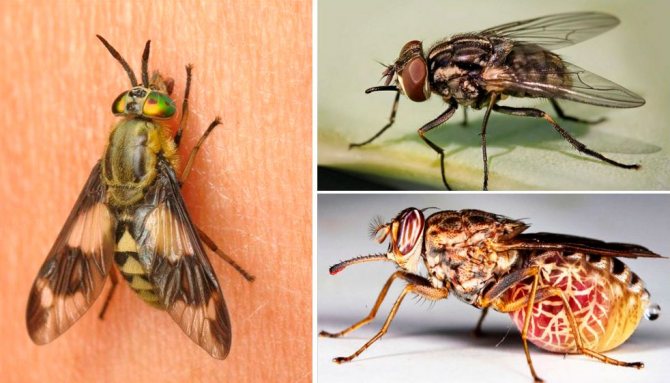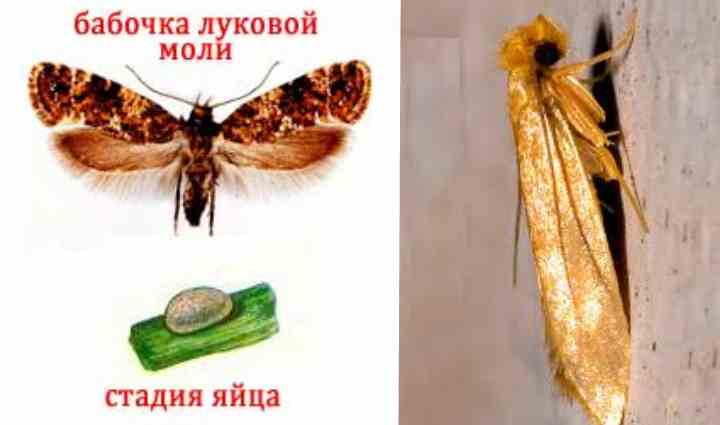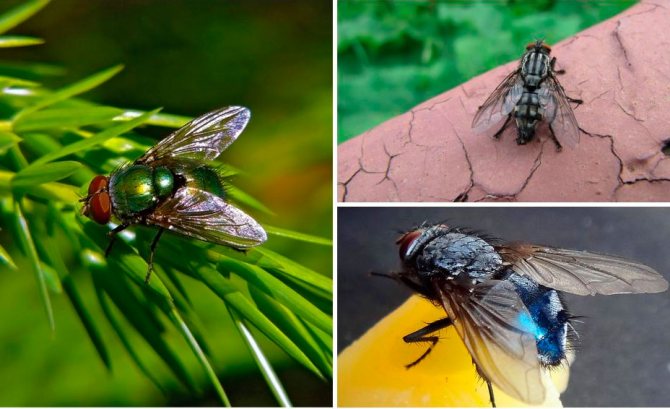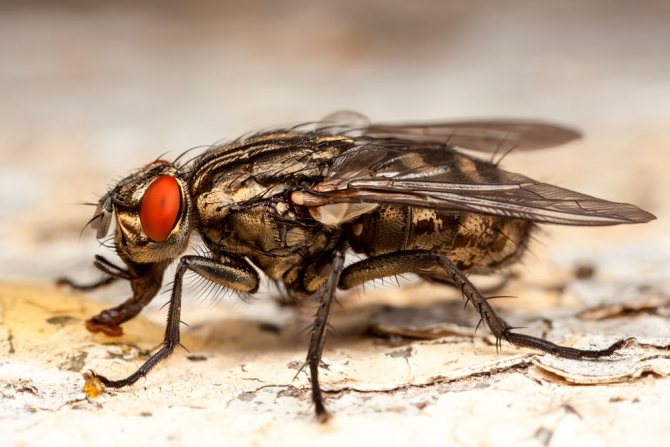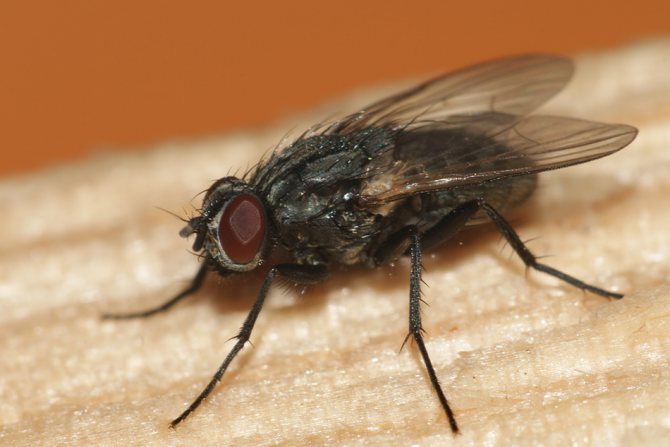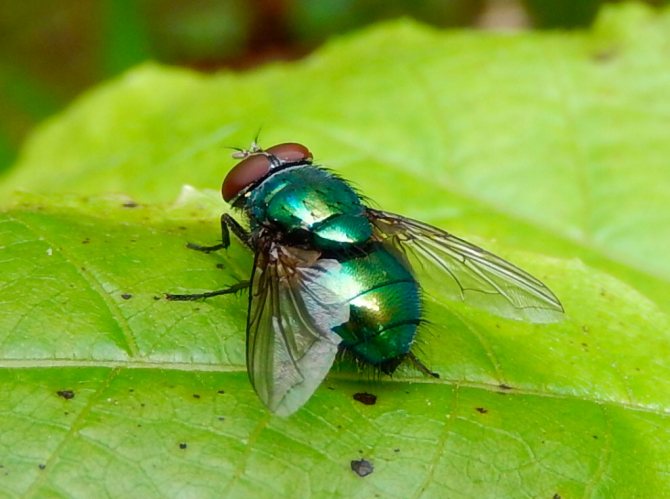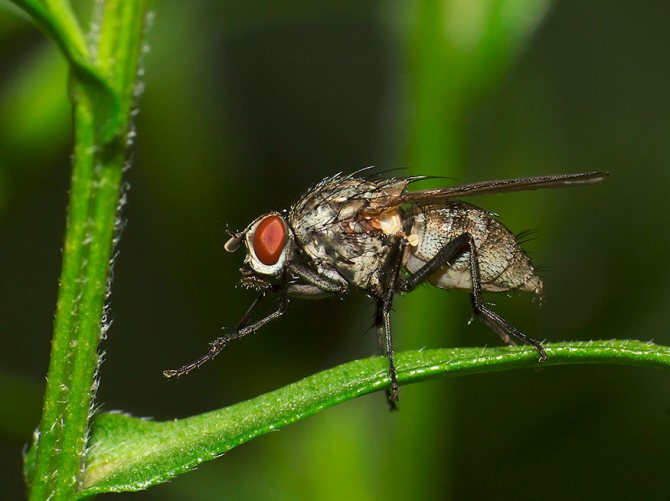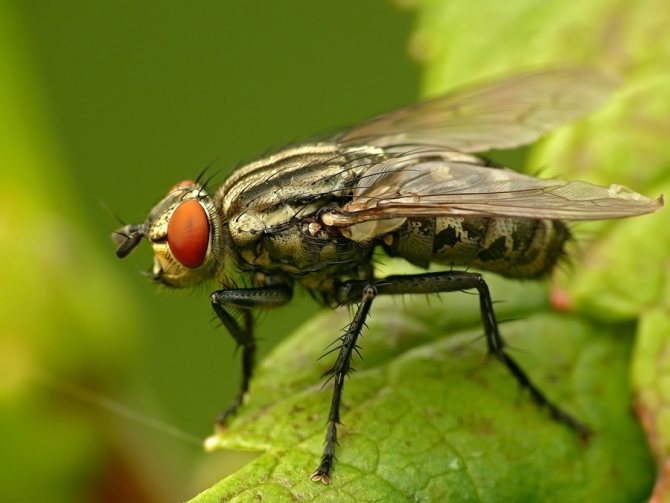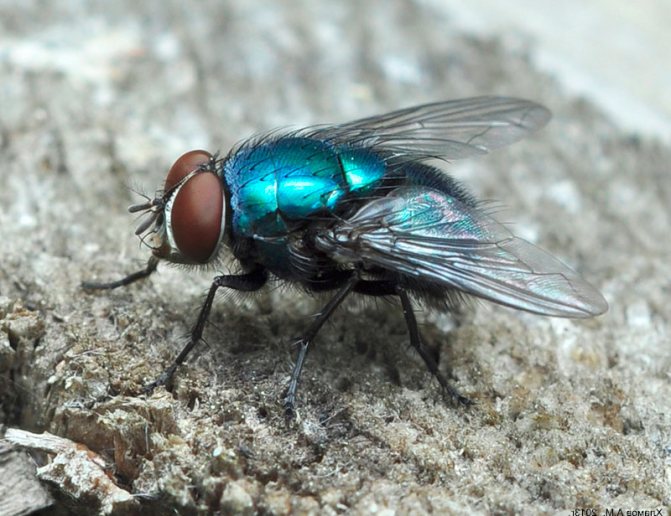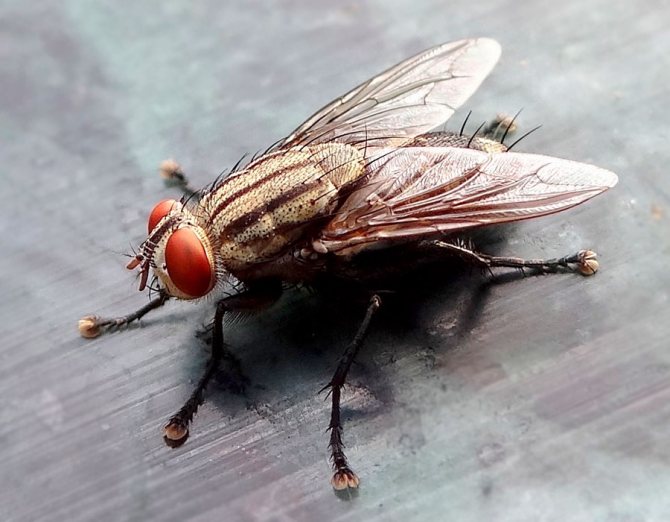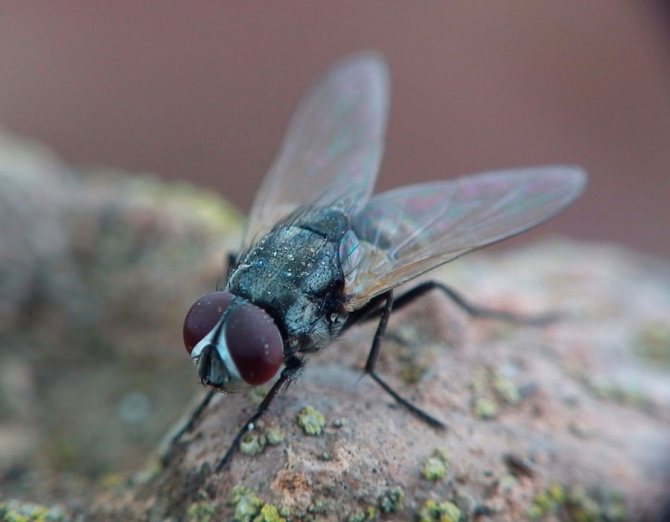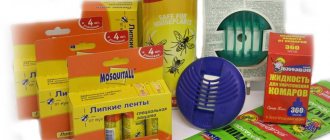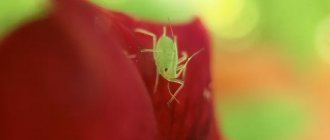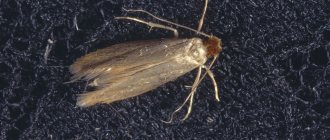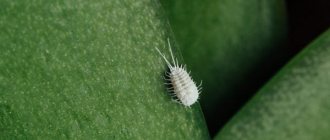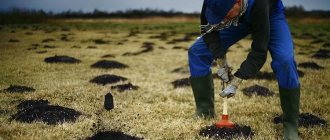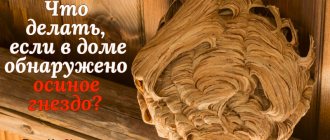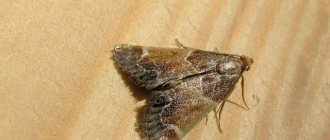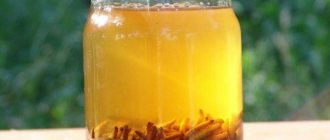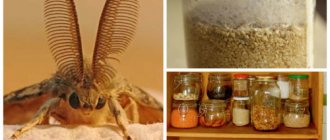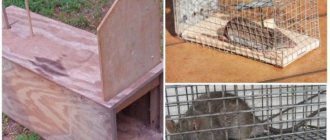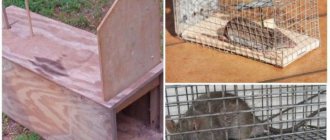How to get rid of moths? Every person has come across a moth at least once, these are insects that have long settled in our apartments and houses. To combat moths, there are folk remedies and special chemicals. To know how to deal with pests and how to get rid of them, you need to figure out what kind of insect it is, what it looks like, what it eats, where it can be, how much it lives and what harm it can cause.
Not everyone knows that there are different types of moths, it spoils furniture, food products, clothes, and at the same time it is almost impossible to notice it.
Moth food and clothes how to distinguish
Clothes moths are usually more common than food moths. Their appearance is very similar, with the exception of some identifying features. The adult clothing moth is more often golden in color with reddish hairs on the top of the head. Also, a row of golden hairs fringes the wings of the insect, which have a span of about 1 cm. Since these pests are blinded by daylight, they are more often found sitting in dark areas of the closet or behind it.
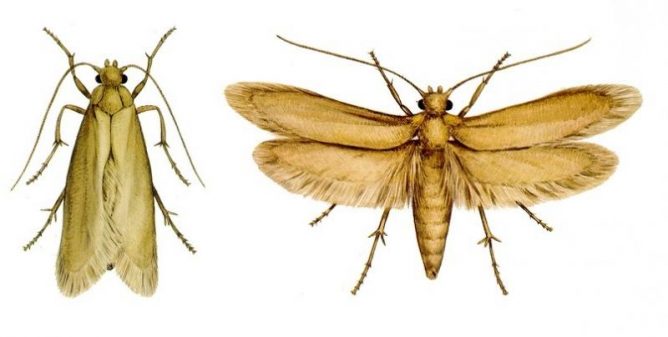
Clothes moth
Clothes moths should not be confused with food insects. This species is usually much smaller in size and has a darker brownish gray color. At rest, the insects are about 0.5 cm long, while most clothing pests are much larger.
Both species usually fly around only the immediate vicinity of the infection site. In addition, they are characterized by a peculiar flight pattern. Fluttering and spiraling movements are the main distinguishing features of these gray butterflies from other types of nocturnal insects.
The larvae of both species are almost identical, except that this stage in the life cycle of the clothes moth always spins a fine, silky web as they feed. Subsequently, this cobweb serves as the basis for weaving a future cocoon.
Among other things, clothes moth excrement may contain dyes from the fibers of the fabric, which they have taken as feed. Therefore, the presence of colored grains of sand should indicate the presence of this species.
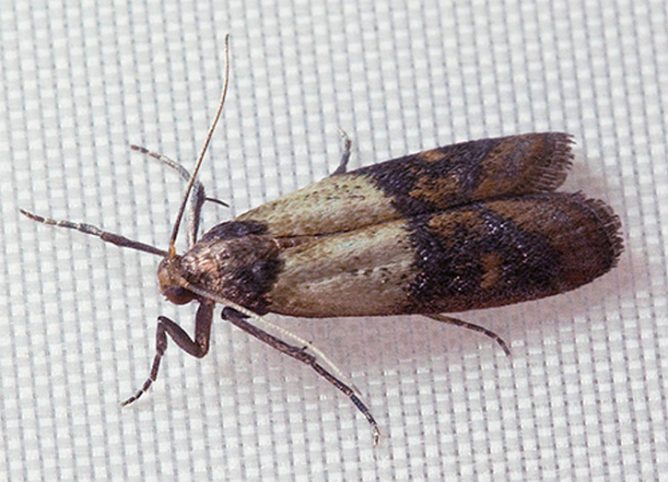

Food moth
Description of varieties
Several tens of thousands of different species of these insects live on the planet. The main household pests are the following types of moths: furniture, food (grain, flour), woolen, fur coat, clothes moth, fruit, potato, apple, cabbage, bee (wax), burdock, mining, etc.
Almost every type of plant has its own kind of insect.
Indoor moth
The house moth is a collective term for all types of insects that can inhabit the house and spoil groceries and clothing. They are distinguished only by the power source, external differences can only be recognized by a specialist.
Clothes moth
The dressing moth is distinguished by the yellowish color of the wings without visible ornaments. The larvae live in hollow tissues and are able to gnaw out huge spaces. For a long time, their presence may be invisible, since they leave the outer thin layer intact. They prefer to eat cotton, wool, natural upholstery of upholstered furniture.From waste products, food debris, dust microscopic accumulations, the larvae build their own cap. The clothes moth is afraid of daylight and tries to hide in the folds of clothes or in covers. Most of the insect lives in closets in dark nooks.
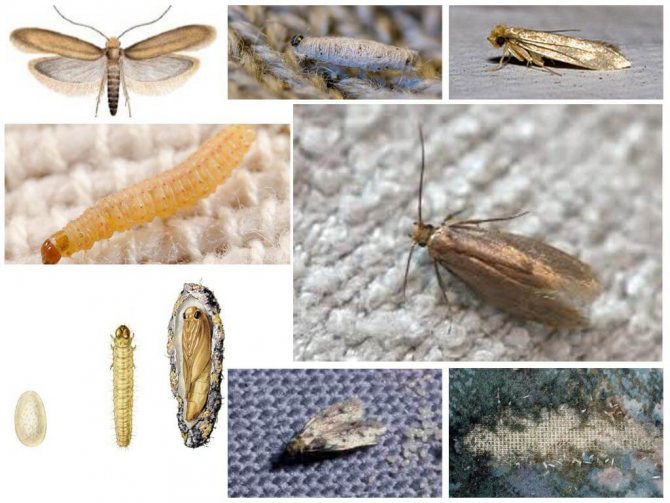

Clothes moth
There are several ways to get rid of clothes moths and other clothing-eating species at home:
- Aerosol dressing agents are effective for killing insects at all stages of development and can be used at any time of the year.
- Freezing clothes - at temperatures below 5 ° C, the entire population dies. High temperatures have the same effect, so you can get rid of cloth moths by hanging contaminated clothes outside on a hot day, after shaking them. Some of the larvae will crumble, and the rest will die under the rays of the sun.
- Wash contaminated items at the highest permissible temperatures.
- Application of special fumigators with insecticidal agents.
- As a means of dealing with adult butterflies, folk remedies are used. Strong-smelling herbs in cloth bags, hung in closets with clothes, can scare off nondescript moths. But it should be understood that aromas cannot destroy larvae and eggs.
Fur coat moth
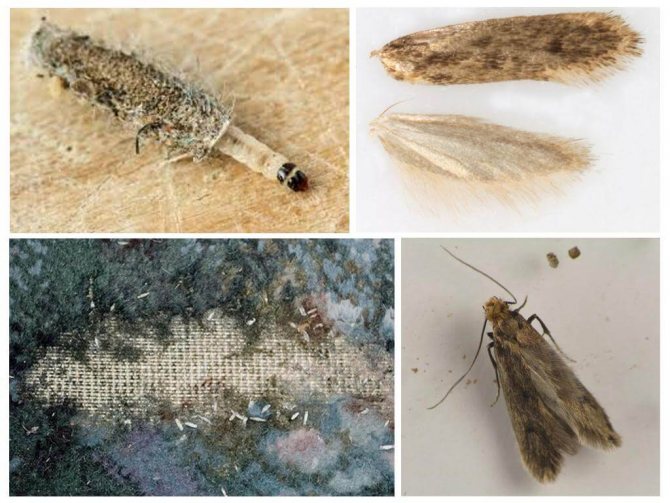

Fur coat moth
When listing what types of moths there are, one cannot but recall the fur coat moth, which is able to eat a fur coat, and in a short period of time turn an expensive fur product into an unwearable thing. Adult butterflies are characterized by their small size and small black dots on their wings. The larvae are white. Food preferences - natural fabrics and furs.
Furniture moth
Furniture moth is another type of indoor pest. The larvae gnaw their way and their path of movement can look like tunnels. The development time of caterpillars depends on the nutritional value of the feed. In food with a high content of natural components, the larvae grow very quickly, after 25-30 days they turn into a full-fledged sexually mature individual and begin to multiply rapidly. Females are very fertile - the number of eggs in one egg-laying can reach two hundred.
Distinctive features of food moth
The food moth is an insect from the moth family with a characteristic pattern on the wings. In apartments there is also an inconspicuous food moth, which can be mistaken for a wardrobe moth. The favorite habitats of this species are the kitchen and food storage facilities. The larvae willingly eat nuts, cereals, dried fruits and any dry food.
The parasite cannot be called an excellent flyer, and getting into the house of a pest from neighboring apartments is nonsense. Most often, the insect enters the house with the infected purchases brought. Temperature 25-30 ° C, high humidity - ideal conditions for the development of larvae. The food moth usually mates in its habitat, where the female lays eggs. Even in those rare cases, when mating occurs at a distance from the food supply, the female always returns to her food environment.
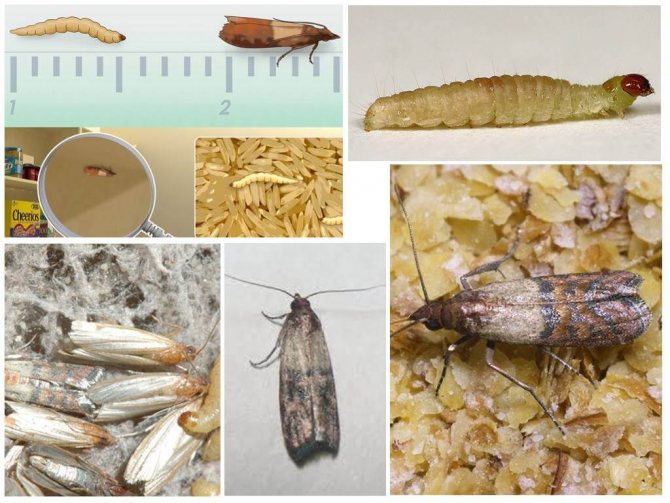

Food moth
The main harm from an insect is spoilage of food, which becomes completely unsuitable for consumption. You should start the fight against a domestic pest immediately, as soon as the "enemy" has given out its presence, then it will be easier to get rid of moths in cereals and other bulk products:
- Conduct an audit of all food stocks. Carefully inspect the contents of all jars, containers, even if they are hermetically closed. Buying contaminated cereals is common. If you find a product in which a pest has wound up, it is best to throw it away. Occasionally, when the contamination has not acquired a grandiose scale, potentially contaminated food is heated in the oven.
- The outer and inner walls of kitchen cabinets, pedestals must be treated with an insecticidal agent and make sure that it does not get on food.
- Adults are also subject to destruction. Despite the fact that they have lost the ability to feed, they mate and reproduce perfectly. Elimination of adults can be done mechanically, using adhesive tapes, bait-traps.
Street moth
The types of street moths include a large number of insect species. City dwellers can often observe the poplar moth, which is sometimes called arboreal. Moths do not harm humans, they feed on poplar down and tree leaves.
In agriculture, grain, cabbage, potato, gooseberry, tomato, etc. are widespread. Almost every plant can "boast" of its own kind of this pest.
Life cycle
Females of both species lay an average of 40 to 50 eggs over a 2–3 week period and die as soon as the oviposition is complete. Males live longer than females and continue to mate for the rest of their lives. Eggs break open within 4 to 10 days, provided the environment is favorable.
In total, the larvae of the clothes moth molt 5 to 45 times, depending on the temperature in the room and the type of food available. The larval period lasts from 35 days to 2.5 years. It is during this period that the greatest harm from insects is observed.
The moth larvae are shiny white, and their head capsules are dark in color. As they feed, worm-like insects rotate, simultaneously producing a cobweb, in which they gradually envelop. When the larvae are ready to pupate, they crawl away from their food source to find a deeper crevice, crawl into it, and the pupation process starts.
Pupation lasts 8 to 10 days in summer and 3 to 4 weeks in winter. The heated buildings allow the moths to continue to develop during the winter months. Typically, the time for development from egg to egg is four to six months, with an average of two generations per year.
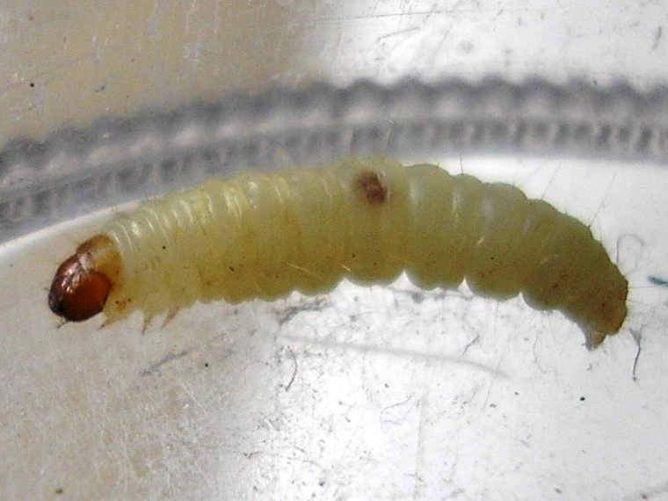

Appearance
What does 1 common mole look like? Such a moth has a yellow color - gray or dark. A red tint is sometimes visible on the body of this insect.
Such a parasite has 2 pairs of shiny wings iridescent in the sun. A fringe is visible along its edges. The wingspan of the front wings of such a moth is 9–18.5 mm. The hind wings are more uniform in color and smaller in size.
The chest of such a small pest is brown on top, and light yellow and shiny below.
The male of this insect is smaller than the female, and after mating with the female and her fertilization, he quickly dies. The female of this small pest lives for about 1 month.
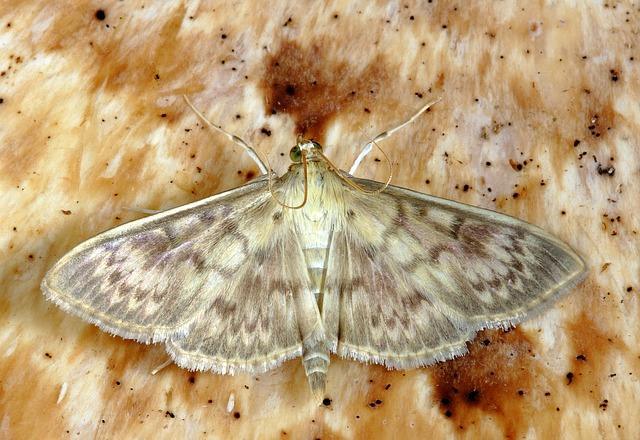

Damage
The larval stage of the insect is a destructive stage in the life of the moth. Insects feed on the wool of outerwear, carpets and carpets, as well as upholstery, furs, animal hair, felt pads in musical instruments and even fishmeal, which is abundant in fish food.
The moth will devour synthetic or cotton blends if these fabrics also contain wool. In addition, the larvae of the pest can also use cotton fibers to make the pupal base from them.
Typical lesions usually appear in hidden places, for example, under collars or cuffs of clothes, in crevices of upholstered furniture, as well as on carpets, some of which lie under furniture. It should be noted that tissues contaminated with food, perspiration or urine stains are more susceptible to damage by pests due to their attractive scent.
How do they harm
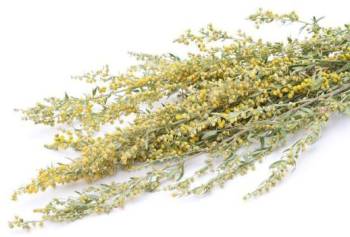

As we said earlier, all the harm of this insect comes precisely from the larvae of the moth. This applies to almost all varieties, without exception.Gluttonous caterpillars can ruin not only the mood with their harmful actions, but also an expensive piece of wardrobe or furniture, hitting the wallet.
The clothing moth is by far the most dangerous of all types of household pests. The larvae of this butterfly feed on fibers of natural materials that can be found in expensive items of clothing, such as a fur coat, or in the upholstery of high-quality furniture sets. Carpets, stuffed animals and even books also suffer from the tricks of these pests.
The larvae can also eat synthetic materials, but such food can only be temporary in the absence of anything else. Synthetics are more likely to harm the caterpillars, slowing down their development, but this does not make it easier for us.
Moreover, these voracious creatures can also gnaw through passages for movement in the fibers of a carpet or fur coat, thereby leaving clearly visible lines and bald spots.
The harm that food moth larvae inflict is, of course, less destructive in material terms, but more unpleasant in moral terms. These caterpillars consume almost everything they can find in the kitchen.
They do not touch unless garlic and hot spices, yet the rest is quite suitable for larvae as a food base.
How to get rid of a clothes moth
Management practices for moth populations include periodic dry cleaning, laundering, proper storage, freezing, heating, fumigation, or the use of insecticides. Keeping humidity levels low inside buildings creates an environment that is not conducive to moth development.
Room walls that do not have numerous tiny cracks and crevices will also encourage less pest infestations. Effective practice of correct and scrupulous housekeeping is essential. It is also important to regularly monitor long-term stored fabrics and the inner surface of wardrobes to prevent their first damage. This approach allows you to take action when the infection has not reached significant limits.
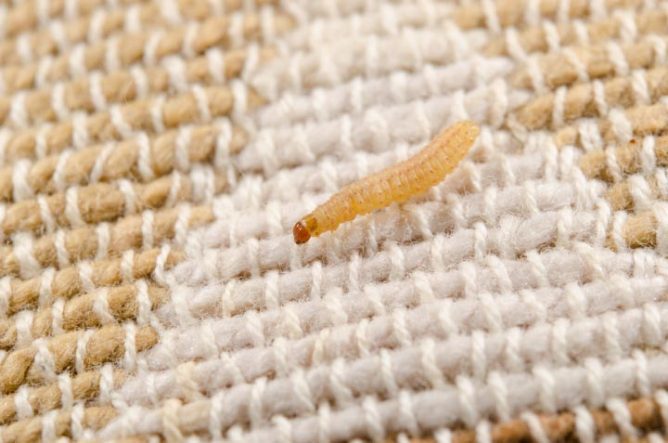

Can a mole bite?
Such stereotypes do not find confirmation at all. Adults and larvae do not have a sufficiently developed organ capable of biting through the epithelium of a person or animal. It makes no sense to damage people for caterpillars, because you can get nutrients from natural materials or food. The myth of moth bites has spread thanks to houses with a lot of mosquitoes and at the same time butterflies pests. A person sometimes has a stereotype that it was a specific night moth that left the itching bite.
In other aspects, the moth is considered an ordinary butterfly with characteristic wings, a special biorhythm and a way of reproduction.
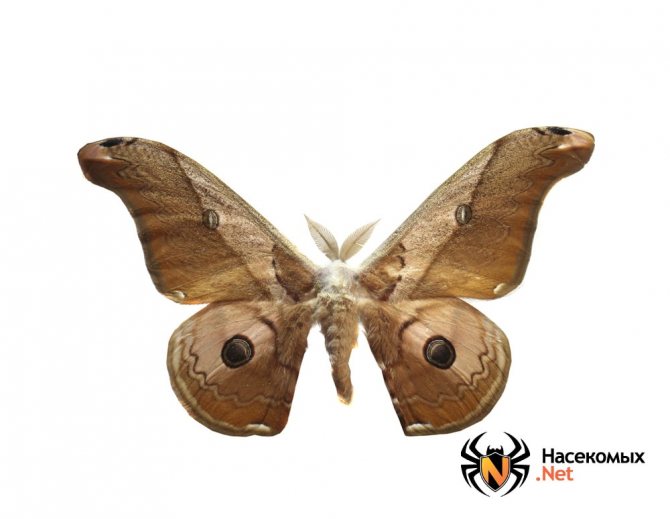

Regular monitoring
In order to check for pests, the first thing you need to pay attention to is whether there are cobweb threads in hidden parts of clothing. It is also possible the presence of tubes that remained after the pupation of insects. In the area of greatest distribution of such pipes, as a rule, there are a lot of spoiled clothing fibers and insect feces. The same picture can be observed in fur clothes, where, among other things, baldness can be observed, and if you easily tug on the remaining fur, it will be separated in large shreds.
6) moths are food for many animals
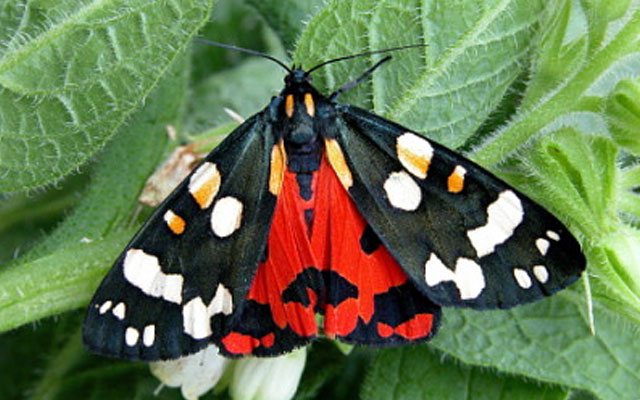

Due to their wide distribution, moths are important links in the food chain, being at the lowest level. They are eaten by many animals, including bats. Some moths have been forced to develop in the course of evolution the means of defense against these predators. For example, moths bears
produce ultrasonic clicking signals that effectively confuse mice, allowing the moth to flee and escape pursuit.
The caterpillars of many moths are also food for living things. 95 percent of nesting birds feed their chicks with insects, with caterpillars being the majority.
Preventing or reducing infections
Periodic cleaning of "dangerous" areas in the house that may harbor moths can completely prevent insects from appearing. These areas include not only hidden areas on woolen clothing, but also areas outside the closet itself, such as under heavy pieces of furniture, along baseboards, and in cracks where hair, dog hair and other debris accumulate.
It is worth paying attention to the space behind the heating radiators and inside the vents.
The vacuum cleaner is the best tool for most of the rudimentary cleaning methods. After using the device in areas known to be infected, the contents of the bag must be removed as quickly as possible from the home, as there may be many eggs, larvae or adults inside that can quickly return to the living environment.
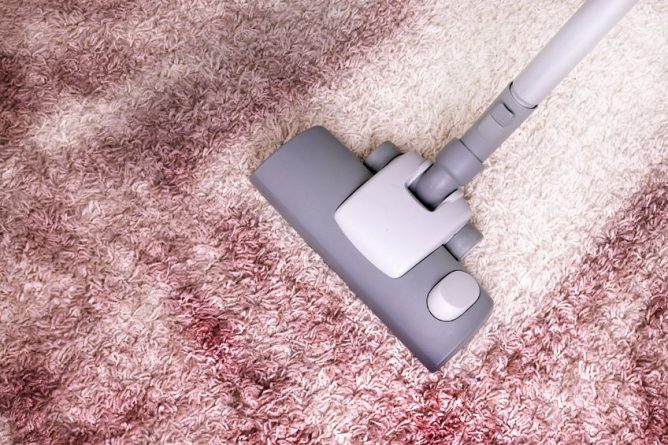

Moli may initially harden on woolen garments or scraps of wool that have been stored for long periods of time. In addition to the proper storage of woolen items, they should be exposed to the sun periodically and cleaned as thoroughly as possible, especially along the seams, inside folds and pockets. The natural fiber brush removes the eggs and exposes the larvae. In addition, the larvae do not like bright light, so they themselves, as soon as possible, will try to fall off their clothes.
If infestation is observed in the closet, do not forget to remove from it all clothing and fabrics that are stored inside. After that, you should thoroughly vacuum and wash all internal surfaces, especially cracks and crevices, before returning clean items. Powdered insecticides containing pyrethroids or pyrethrin, such as 0.05% Deltamethrin or 1% Pyrethrin, can be used to treat cracks and crevices. Before using chemistry, you must always follow the requirements indicated on the label.
Main types
A moth is a very small butterfly with wings as large as 7 mm. If you put them together, you get a small triangle.
At the moment, there are such types of moths:
- food;
- chestnut;
- cabbage;
- poplar;
- woolen;
- apple;
- mountain ash;
- potato;
- furniture.
Particular attention should be paid to how each of the above types of lepidopteran pest looks like.
There are few of them, but such moths often cause significant damage to various things, food or people.
Food pest
A food moth is another small domestic insect. Its main types there are such varieties of this moth as firefighter. This butterfly becomes active mainly at night.
What does such a food parasite look like? Its size is 0.3-1 cm. This moth has a light gray or brown color.
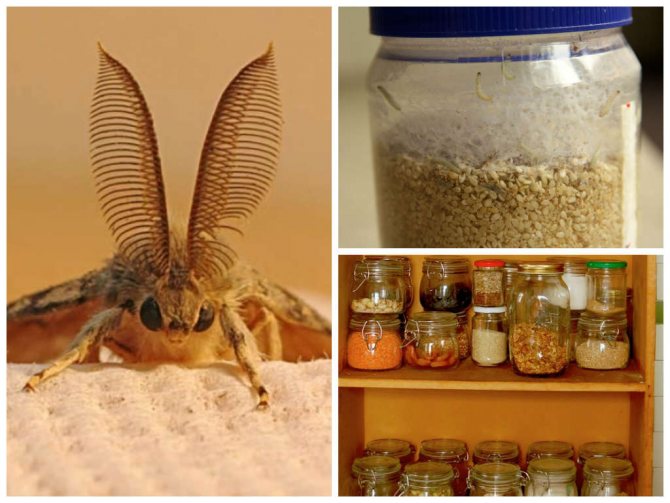

This type of lepidoptera lives for 1-2 weeks. At this time, its larvae are formed, which spoil food or harm human health.
Such a moth reproduces only in those places that are comfortable for it, where there is a lot of moisture and water. In a similar situation, its females lay eggs.
Thus, this type of house moth infects the following foods:
- cereals;
- various types of nuts;
- cookies;
- chocolates;
- tea;
- spice;
- bakery products;
- flour, bread;
- various sweets;
- beans;
- fruits or a variety of dried fruits.
When using those products that are infected with such a minor pest, a person causes the following harm to his body:
- a person has severe intoxication throughout the body;
- sometimes severe allergies appear;
- reduced immunity.
As a result, if a similar Lepidoptera moth spoiled this or that product, it must be immediately thrown into the trash can. Also, if this kind of butterfly appears in the kitchen, then the person urgently needs to get rid of it.
Chestnut butterfly
Also at the moment there are such types of moths as, for example, the chestnut butterfly. This moth is an adult insect with a wingspan of 1 cm and a length of 7 mm.
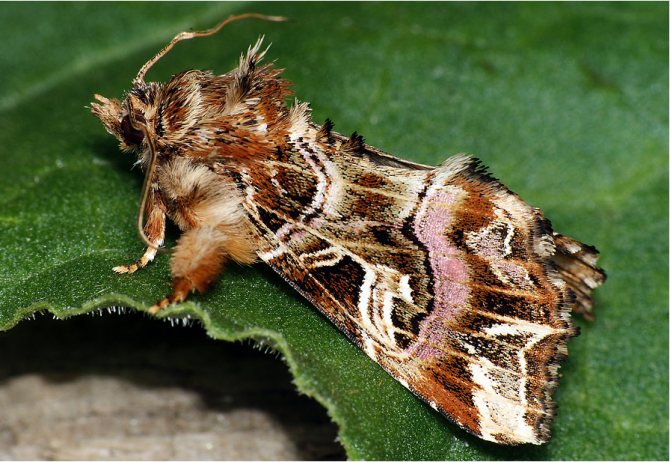

The wings of this type of parasite have a red-brown color, on which white lines are clearly visible. This butterfly has a brown chest, gray belly and black and white legs. The eggs of this insect are 0.3 mm in length and are light green in color.
According to biologists, the invasion of chestnut-like pests occurs for 2 years in a row, and then they are not visible for several years. This butterfly lays eggs on the leaves of various trees, and then caterpillars are formed from them. They feed on the sap of various plants.
On the leaves of various chestnuts, which are damaged by such a lepidopteran parasite, 1 or several brown spots appear, and an adult insect, upon exiting the cocoon, destroys the leaf skin.
In the worst case, the chestnut loses its own foliage, since 100 or more larvae of this type of butterfly are formed on it.
Cabbage moth
The cabbage moth is a nondescript little butterfly. Its small wingspan reaches 16 mm.
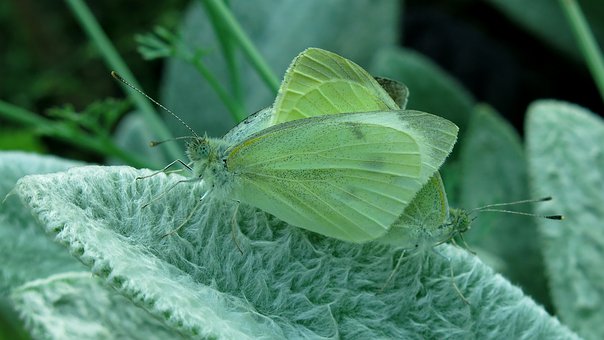

The wings of this moth are gray or dark brown. However, females have lighter wings than males. The edges of the hind wings have a light fringe.
The eggs of this insect are about 1 mm long. They also have an elongated shape and are covered in green.
This type of not domestic but garden pest feeds on a variety of cruciferous vegetables.
In a similar situation, he eats cabbage, rutabagas, radishes, turnips, radishes, etc.
Poplar moth
Poplar moth or speckled moth is a small parasite that damages poplar trees. This butterfly has black dots on its wings.
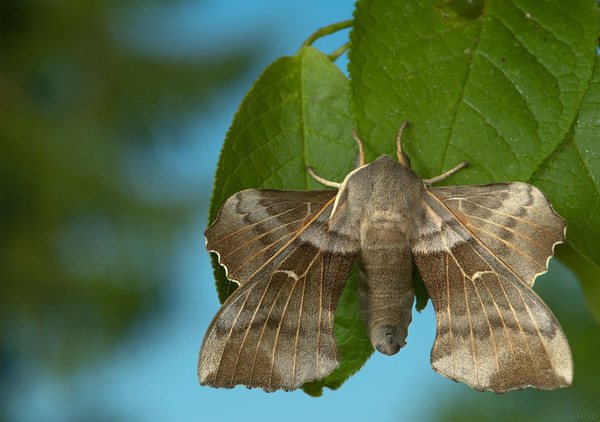

The narrow wings of this type of moth are fringed, and their wingspan reaches 7 mm. Such an insect has a nondescript brown color.
Such a moth does no harm to a person. Piglet does not eat various foods, does not destroy things, clothes, and does not carry specific ailments.
The presence of such a butterfly in the house harms the human nervous system more, so the tenant gets rid of it as soon as possible.
Sometimes such a lepidopteran pest flies into specific electrical devices, equipment or lamps, leading to their incapacitation and damage to their appearance.
In addition, the speckle stains the furniture, and also sticks to the curtain and tulle. Thus, this insect leaves behind stains that are difficult to remove.
Woolen butterfly
The wool moth is the most common species of this insect. Such a butterfly grows up not only in various apartments and warehouses, but also in mills or museums.
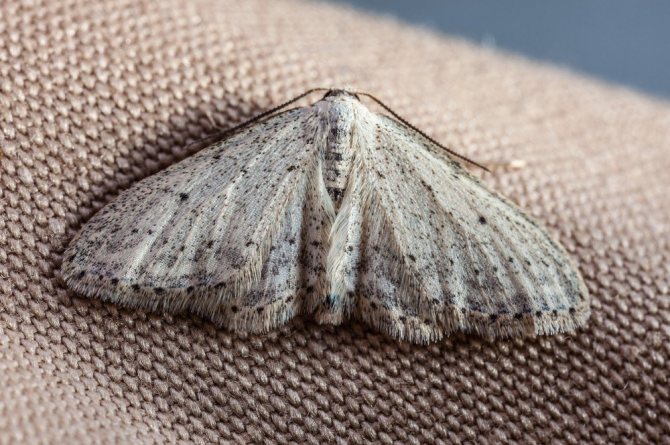

The larvae of such a parasite feed on contaminated clothing or dust.
The wings of such a moth correspond to the size of any similar insects - up to 2 mm. The front fenders are covered in brown, which gives a pearlescent light shade.
The hind wings of this woolen pest are beige in color, and their edges are fringed.
This type of parasite is very prolific. After all, his female lays up to 90 eggs in her short life.
Apple small pest
Apple moth is considered a dangerous small pest. This light butterfly lives in large and small apple orchards.
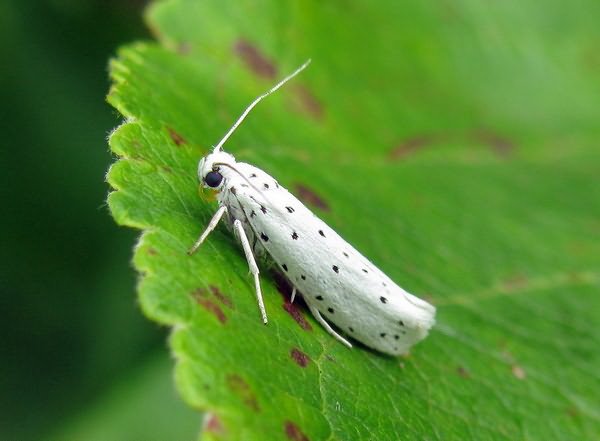

More often, the apple tree suffers from the adult larvae of this moth. After all, various garden species of moths feed on its leaves.
With a large number of apple parasites, the leaves curl inward, dry, and then fall off. As a result, the apple tree remains without fruit for a long time.
Rowan moth
What other moth is there? On the backyard, the mountain ash moth is often found. It is a small gray butterfly with a maximum wingspan of 1 cm. The length of this parasite is 6 mm.
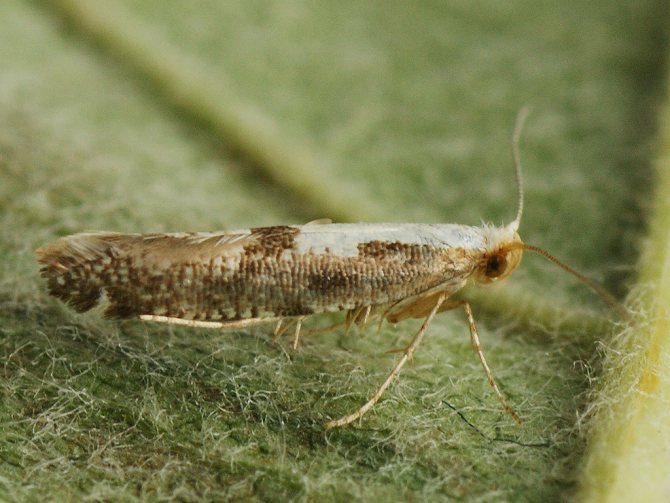

The caterpillars of this pest are 1 cm long. They have a green-gray color, which sometimes has a red tint.
Such an insect feeds on the fruits of hawthorn or mountain ash. During mass reproduction or in lean years for mountain ash trees, this butterfly damages not only mountain ash, but also an apple tree.
Potato butterfly
The potato moth or fluorimea is a nondescript insect. The eggs of such a butterfly are small (about 0.44 mm), so they are very difficult to see from them.
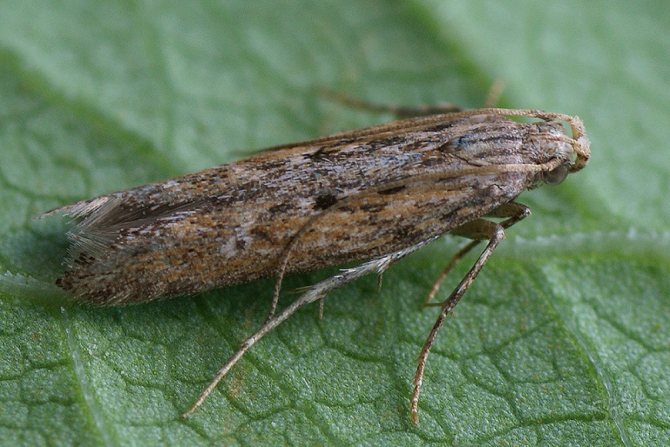

The eggs of this insect are oval and white in color, but with the development of the embryo, they darken. Egg clutches are located on the back of the leaf side, and develop in only 2-3 days.
If fluorimea has started up on the plant, then it completely destroys the entire bush - from the very top to the underground tubers.
Moreover, not only the potatoes themselves suffer, but also vegetables such as tomatoes, peppers, eggplants, etc.
As a result, when raiding a crop, fluorimea moths harm people in this way:
- weaken several potato or other bushes at once;
- reduce the quality of potatoes;
- dramatically reduce the amount of seed potatoes;
- reduce productivity.
Furniture parasite
Furniture moth is considered another 1 type of this small pest. The larvae of such a butterfly gnaw a small path to their food and their route of movement is similar to tunnels.
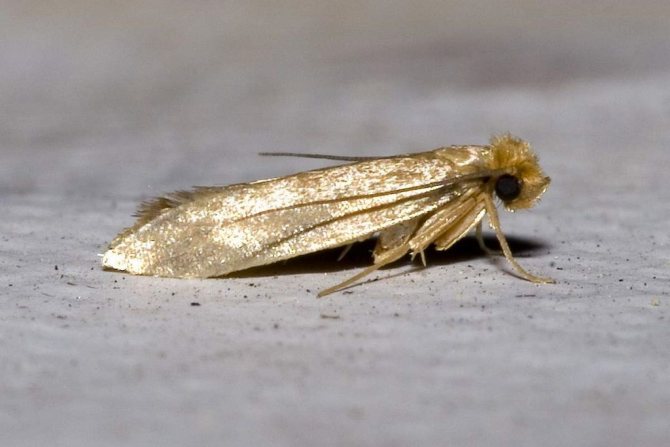

In food, in which there are many natural various components, the larvae of this type of moth in an apartment grow at a very fast pace. As a result, after 25–30 days, they become sexually mature parasitic individuals, which then mate with females and quickly multiply in closets with clothes.
The females of this Lepidoptera insect are considered to be very prolific butterflies. After all, the number of eggs of this parasite in 1 egg-laying sometimes reaches 200 pcs.
This type of lepidopteran moth is a serious small pest in the human house.
Such a butterfly feeds on clothing, carpets, various blankets or upholstery.
In addition, this lepidoptera pest eats fur, woolen products, feathers, or various products - animal bristles, which are used to make toothbrushes, as well as fiber for the piano, etc.
Dry cleaning and anti-money laundering
The most common and effective method for killing all life stages of moths in clothes, blankets and other washable items is classic washing or laundering. A thorough washing process should not take less than 20-30 minutes in water that has been heated to at least 50 degrees Celsius. Since many woolen items should not be washed in hot water, dry cleaning may be the only viable option. Keeping tissues clean has another advantage - insects are less likely to colonize them.
Protection of things in the closet
Moths often damage improperly stored items. When storing pest-sensitive fabrics, make sure the items are clean and free of pest insects, then place them in an airtight plastic bag. Additionally, before sealing the bag, repellents can be placed inside, for example, sprayed with lavender essential oil.
Naphthalene or crystals containing 1,4-dichlorobenzene, also called paradichlorobenzene, are also widely available to protect clothing during storage.
Since these materials are toxic, remember to keep them away from children and pets. These products have other disadvantages as well.For example, they leave an unpleasant odor on clothing and other objects, so if they come into contact with plastic buttons, handrails or clothes bags, they can damage the plastic and soften and melt synthetic fabrics.
When these chemicals evaporate, they produce vapors that, in sufficient concentration, will slowly kill the insects. Vapors accumulate to the required concentration only in an airtight container. If the container is not sealed, the chemicals will only slightly scare off adult moths, but they will be useless against larvae.
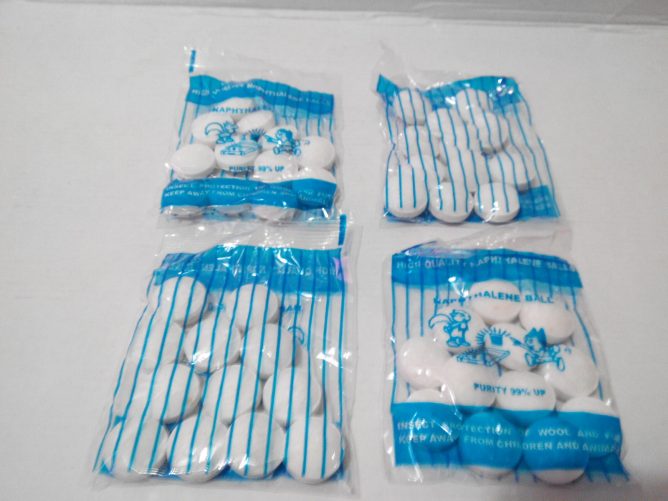

The effectiveness of the cedar tree is a controversial issue. Aromatic Oriental Red Cedar, or Juniperus Virginiana, contains an oil that can kill small larvae, but does not affect large larvae. In addition, after several years, cedar loses this quality, so the use of squeezed essential oil is always more effective than a chest or cabinet made of cedar wood.
Activity of butterfly moths in spring
One early spring, many moth butterflies appeared in our Moscow apartment. They sat in a wide variety of places (walls, doors, window sills, and window frames). Butterflies flew from place to place from time to time to our "stormy applause", with which we did not greet the moth at all, but tried to slam it down.
I called the sanitary and epidemiological station and asked what was going on? The employee who answered the phone clearly explained to me that it was necessary to study well at school and to know that a moth is just a butterfly. And in spring, butterflies begin to fly. And not every mole gnaws holes in fabrics, spoils fur coats and food. And it is not moth butterflies who do it, but caterpillars. And then she asked a rhetorical question: “Were they planted poplars under the windows? So what do you want "? From her irritated tone, it was clear that I was not the first to call that day about the mass appearance of moths. Fortunately, I never encountered so many flying moths. But a short educational course on the topic of moths turned out to be very useful.
Freezing and heating
It is also possible to control moth populations by heating the infested item in an oven for at least 30 minutes at temperatures above 50 degrees Celsius, after placing the accessory in a plastic bag. In the same form, things can be frozen in the freezer for several days at temperatures below minus 20 degrees. Before using any of these methods, it is imperative to take into account the moment of possible damage to the tissue by cold or heat.
Traps
Traps are a relatively easy-to-use technique that helps detect and reduce clothing moth infestations. Pheromone traps are available in specialty stores and are relatively inexpensive. Pheromones are chemicals produced by the male insect, which in this case is a sex attractant that can influence the behavior of other members of the same species.
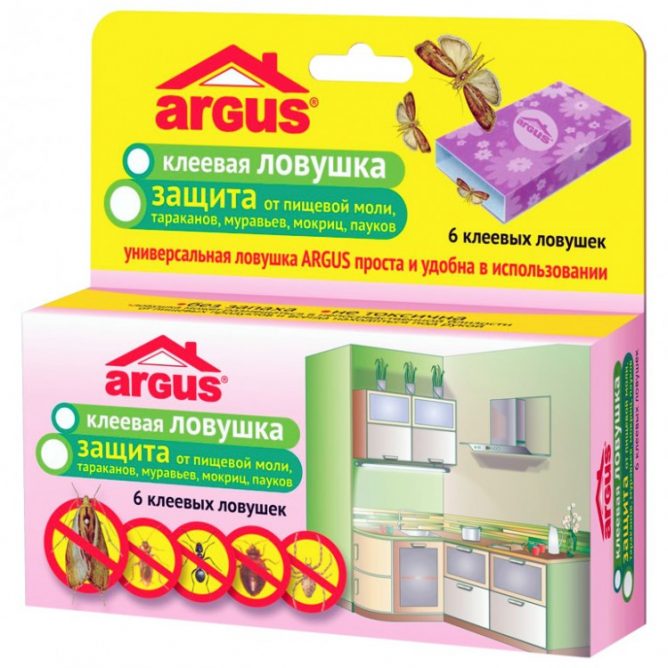

Females are lured into a trap by the sex pheromone, where they get stuck on its sticky sides. Since the pheromone only specifically attracts moths, it will not attract other types of insects.
Is such a parasite dangerous for humans
Unlike other various parasitic insects, the moth does not cause much harm to a person and his apartment if it is removed from the house in time. Such a moth often destroys only certain clothes.
Certain types of moths (for example, the cereal butterfly) damage foods such as cereals, chocolate and nuts. However, this type of moth does not cause significant harm to humans.
The only drawback of such a parasite is food contamination, as well as a rotten look.
Why is moth dangerous?
It harms a person in the following way:
- spoils the appearance of food;
- contaminates dishes;
- destroys clothing;
- causes discomfort.
Such a lepidopteran parasite is dangerous to human health only if it does not get rid of it in a timely manner.
Video
Extremely dangerous! About potato moth
Insecticide use
If the moth starts up on things that cannot be dry-cleaned, washed, heated or frozen, you will have to treat them with chemical insecticides. Finding a product that contains a moth pattern on the label is not difficult, you just have to specifically follow the instructions on the back of the package.
Insecticides for moth clothing usually contain pyrethrins, which provide a quick knockdown for insects. Most of these products can be sprayed directly onto fabrics. Pyrethrin insecticides do not leave persistent toxic residues, making them more suitable for controlling clothes moths.
However, some sprays have an oil base and should not be sprayed on silk, rayon, or other fabrics that are easy to stain. Also, do not use sprays around open flames, sparks or electrical circuits.
If in doubt, I would like to share the following information as advice. First you need to spray a small amount of the product on an inconspicuous area of the garment and let it dry to see if staining or staining occurs.
Prophylaxis
When buying bulk products, you should pay attention to the tightness of the packaging, carefully examine cereals for the presence of worms, cobwebs, and other foreign inclusions. You should not buy loose bulk products either.
It should be remembered that a plastic bag is not an obstacle for moth larvae - they can easily gnaw it. Bulk products should be stored in glass, plastic, metal containers with a tight-fitting lid.
You can secure your home with small nets on the windows and ventilation vents. For prevention, in kitchen cabinets, you can decompose sachets with herbs that have a strong aroma, or drop a few drops of essential oil from herbs and plants: lavender, fir, wormwood, geranium, cloves, tobacco, rosemary, walnut leaves, bay leaves, wild rosemary.
Does not tolerate moths and the smell of citrus fruits - it is recommended to spread peels or cotton swabs with their oils in kitchen furniture. Garlic also has a strong smell - one clove should be put in a bowl in which cereals are stored.

